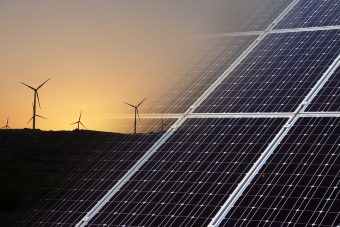
Boosting renewables, electrification and flexibility would structurally ease electricity costs for consumers, increase European competitiveness, and reinforce the business case for solar.
New modelling shows that electrification and flexibility can slash average day-ahead energy prices by 25 per cent by 2030, and by 33 per cent by 2040, compared to 2023. At the same time, the solar capture prices will be 71 per cent greater in 2030 compared to the baseline, and 54 per cent higher by 2040, supporting the sustainable growth of solar project developers.
Beyond benefit for consumer and developer, electrifying and flexing the system means system-wide cost savings – 30 billion euros saved by 2030 per year, and 160 billion euros save by 2040 per year.
“It is time to take the next step in energy transition. We need a flexibility revolution, surrounding renewables with grids, storage and electrification. The new political cycle is an opportunity to build the new energy transition agenda. We call on EU leaders to implement the existing electricity market regulation, set new targets for renewables and flexibility to 2040 and adopt an EU electrification action and investment plan as soon as possible”, said Walburga Hemetsberger, CEO of SolarPower Europe.
More:
- STOP SHOP IN ZAJEČAR TO HAVE A NEW SOLAR POWER PLANT
- CAN HEAVY INDUSTRY RELY ON SOLAR ENERGY?
- INDIA IS THE THIRD COUNTRY IN THE WORLD IN TERMS OF SOLAR ENERGY PRODUCTION
SolarPower Europe’s new report, Mission Solar 2040: Europe’s Flexibility Revolution, maps out three scenarios through the coming decades; solar-as-usual (SAU), solar + flexibility (SF), and solar + flexibility + electrification (SFE). Compared to SAU, the SFE scenario reduces curtailment – solar energy wasted – by 66 per cent in 2030 and 49 per cent in 2040. The more efficient utilisation of solar energy leads to gains across the economy.
With a flexible, electrified system, more solar can be added to the grid. By the end of this decade, the EU could reach 1.2 TW of solar, much higher than the 750 GW EU Solar Strategy goal. By 2040, the EU could host 2.4 TW of solar, meeting 39 per cent of the bloc’s growing power demand.
Critically, ramped-up solar deployment would empower the decarbonization of the economy – driving down emissions the equivalent of over 550 MtCO² per year by 2040 compared to current forecasts.
Source: SolarPower Europe



